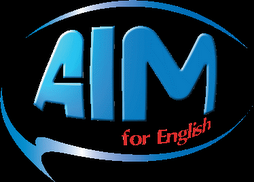Most people reading this will have experience of learning a language in two ways.
By far the easiest was when you were a baby. Babies have an unbelievable ability to absorb and permanently remember their mother tongue. Unfortunately we only get one chance to do it this way, and then the ability disappears. So you have already used your one shot at the easy way. Sorry. And a bit more bad news is that as you get older you will find language learning progressively more difficult.
You will also have learned a foreign language at school. Here you were in a large group, perhaps of 30 students, with your teacher explaining grammar, writing things on a board, pronouncing words and leading repetitious drills. You will also have spent time wearily copying things down into a book and trying to learn it at home. If you were very lucky you will have had access to a “language laboratory”, where you could do more repetition. It is highly probable that you found the whole language learning experience tedious, difficult, stressful and inefficient. That’s pretty much the standard response to the standard system of teaching languages.
Some people are good at hearing, learning and mimicking sounds. Others are great at remembering visual things. Some people learn by repetition of words, some by using the language in context. The sad thing is that most people don’t even know their special strengths because they went through a standardised system as a student at school, or even in a specialised language school. In fact, all the “standard” approaches to language learning miss the essential point; that there is no such thing as a standard human being. The huge range of differences between us is part of the reason why we find life interesting.
So any effective system of language learning has to be one that caters for variety. Variety of interests, variety of motivations, and variety of learning styles. This will always be a challenge.
After all, one teacher, one whiteboard, one lesson…how do you build variety into that? Great teachers can do it!
The good news is that our knowledge of how people learn (and our ability to cater for their various learning styles) have improved by leaps and bounds over the recent past.
We know that stress gets in the way of learning. So any language school has to provide a relaxed, comfortable informal environment where students are happy to be. You need refreshments at intervals, exercise at intervals, and great teachers all the time. You also need to be in a group, but not 30 strong!
Another thing we know is that new skills are easier to acquire if they are interesting, and can attach themselves to skills you already have. For example, the fact that you’re reading this means that you are computer-literate. Most language students today are highly skilled digital users. So using computers and MP3 players to record language comes naturally to you. Digital surround sound is your norm. And sitting at a pc to review notes is more efficient than the drudgery of re-reading handwritten notes.
Today’s students can download their notes directly from an interactive whiteboard that converts your own or your teacher’s scrawl into print and adds in materials pulled off the Internet. The download may be to a school pc or your own laptop or PDA, using a wifi network. There is no doubt that learning a language is a serious task, but all this technology makes the process more stimulating, doesn’t it? And research has shown that we learn much better if we feel engaged and stimulated.
So here at last are the key elements of language learning in the 21st century. Of course you need great teachers who understand the need to cater for human variety. Then you also need a relaxed environment that de-stresses the process. And you need to exploit digital technology to absorb some of the drudgery and make your learning process more stimulating. Now…. where can you find all this under one roof?

